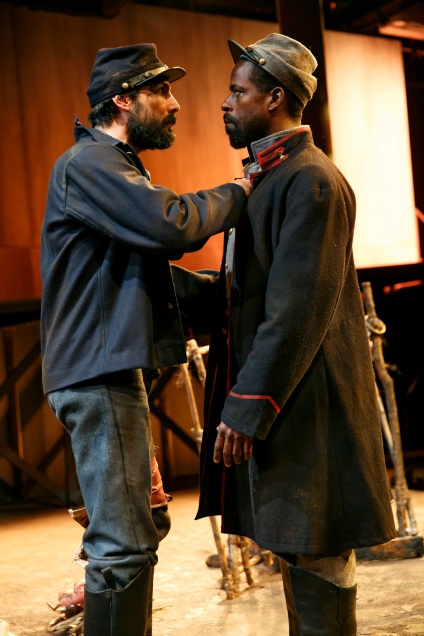I did my day backwards. Starting from a reflective, quiet experience, I ended with a quarreling barrel of noise and anger that fueled the Trump victory.
Story of my life at the moment. Escaping into art before being forced into reality.
Agnes Martin made over 600 paintings exploring emptiness, energy, seeing, and surprisingly, joy.
The show at the Guggenheim opens with this oddly shaped room hung with the entire ethereal series Islands I – XII from 1979. Here in Martin’s signature style, the paintings explore light and form and formlessness. She challenges us to slow down and look in order to really see. This is the work of art. To make us slow down and think, feel, remember, dream, and aspire.Martin wants you to experience innocence, freedom, perfection attained and resisted.
Here shapes emerge. Stripes of pale blue and gray. Pencil lines. All revealed up close and melt away at a distance. The pieces unite and converse, push against each other for space. They look stunning with the architecture.
Martin explained that she works in a meditative way, emptying her mind and waiting for inspiration. For her, inspiration is emotional, and the intellect does not produce artwork. So despite what you see, her works are not minimalist, mathematical explorations of line, color, shape. You can see the artist’s hand.
Instead emotion fills her intention, and she argues the work, like the Abstract Expressionists. And not just any emotion.
Martin says she draws a line and chooses to live above the line, with happiness, beauty, and love. By this approach, I’ve been living below the line since the election. After 9/11, art pulled me above the line. I don’t know what will this time.
Going to the Jewish Museum certainly wasn’t the answer. Although ostensibly I went for the John Singer Sargent portrait on loan, aching for his bravura splashes of color after the austere monochromes of Martin.

But I was literally swept into the bright noise of Take Me (I’m Yours). This democratic space lets artists express in the moment, and the below-the-line anger oozed through the rooms.
With objects to take ranging from pills to lemon water and t-shirts and ribbons to words on paper and words on the wall, I filled the bag provided. My bright yellow ribbon states “It is not enough to be compassionate” in hot pink serif letters. This was the cleanest saying hung for the taking.
The t-shirt: “freedom cannot be simulated.”
What tore my heart open was the poster created by Jonathan Horowitz before Election Day. I couldn’t bear to take one, although it was probably the most popular object in the exhibit. Now who’s face will join the portraits?
Martin’s Taoism that had so calmed and uplifted me vanished immediately.
I don’t know why I decided to follow through on my ticket purchase for Lynn Nottage’s “Sweat.” But I went and found the violent yelling and seething racism of working class plant workers just more than I could take.
Yes, the play was written and even opened before the election. I bought my ticket when I could assume my pedestal height to empathize with their struggles for work, which in my privileged way I share, so a connection. I couldn’t make it past intermission.
I get it: working class white America is angry. Now liberal America is angry. What do we do with all this anger? How can we get back above the line?
Or do we need to blur the lines or weave the lines? Try something new?















